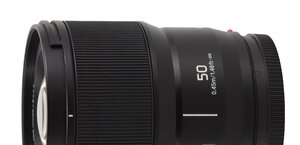Panasonic Leica DG Summilux 12 mm f/1.4 ASPH
4. Image resolution
Let’s glance at a graph below and check how the tested lens performs in the frame centre and on its edge. .

Please Support UsIf you enjoy our reviews and articles, and you want us to continue our work please, support our website by donating through PayPal. The funds are going to be used for paying our editorial team, renting servers, and equipping our testing studio; only that way we will be able to continue providing you interesting content for free. |
- - - - - - - - - - - - - - - - - - - - - - - - - - - - - - - - - - - - - - - - - - - - - - - -
The results in the frame centre are very good indeed. Already at the maximum relative aperture the MTFs are high, reaching near 64 lpmm; on stopping down the lens they are able to exceed 75 lpmm. It is a bit short of record values but still this performance remains better than that of the Panasonic 2.5/14 of the Olympus 2/12.
The lens fares sensibly well on the edge of the frame. At the maximum relative aperture the values are just slightly higher than the decency level and the peak of the performance, meaning about 55 lpmm, is reached near f/5.6.
One thing is worth noticing here. The graph shows averaged out results taken from the left and the right side of the edge of the frame. Still, in the case of the tested lens there was a distinct difference between the sides; we decided to present it in a form of another graph which can be found below.

The left side looks splendid. Already at the maximum relative aperture the MTFs get to 56 lpmm and on stopping down they are able to exceed 65 lpmm. On the right side you see quite different values – by f/1.4 and f/2.0 the image is below the decency level and maximum MTFs are just getting near 56 lpmm.
The following crops show the situation as captured in photos of our testing chart.
| Olympus E-PL1, RAW, f/1.4, left | Olympus E-PL1, RAW, f/1.4, right |

|

|
One thing is sure: it is not an image you would expect from an expensive lens produced by a renowned company. Quality control should have intervened and stop the distribution of the tested specimen.
As we’ve been preparing to move our testing procedure to a new body, the Olympus O-MD E-M5 Mark II, below you can find resolution values we got with the help of that camera.

The results might be by about 1-3 lpmm higher than those from the E-PL1 but the overall situation is in accordance with the one described above.
At the end of this chapter traditionally we present crops taken from photos of our resolution testing scene saved as JPEG files along with RAW files, used for the analysis above.
| Olympus E-PL1, JPEG, f/1.4 |
 |
| Olympus E-PL1, JPEG, f/4.0 |
 |






